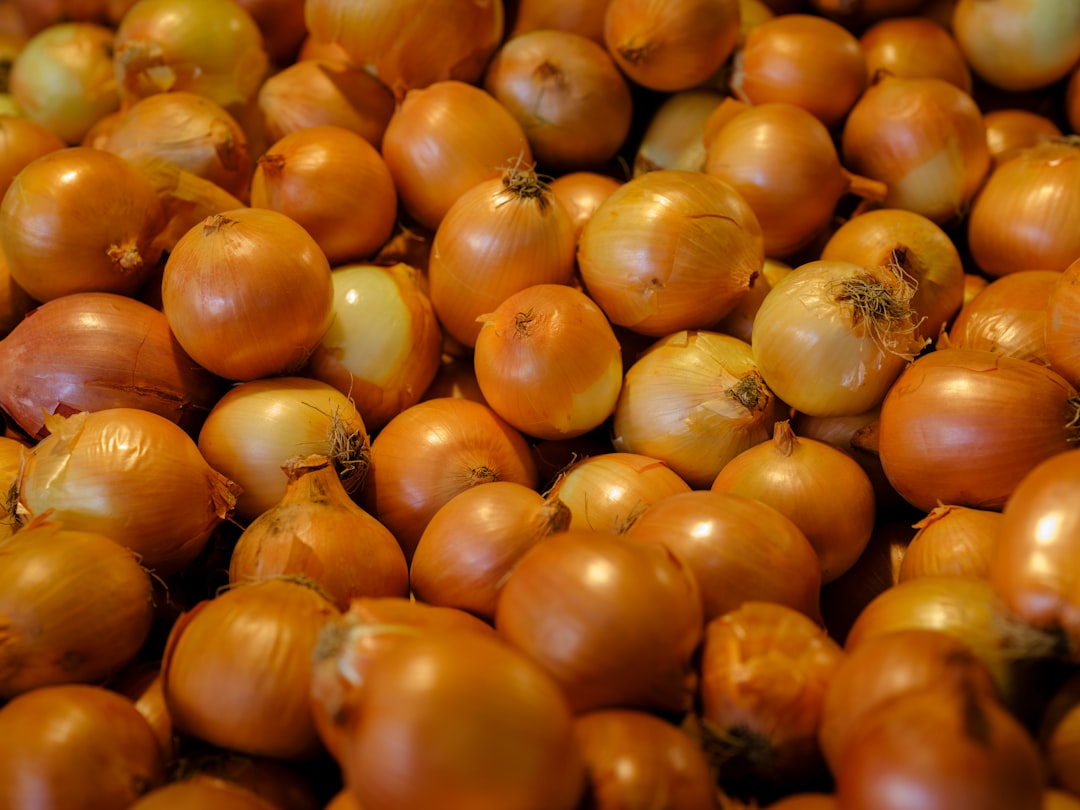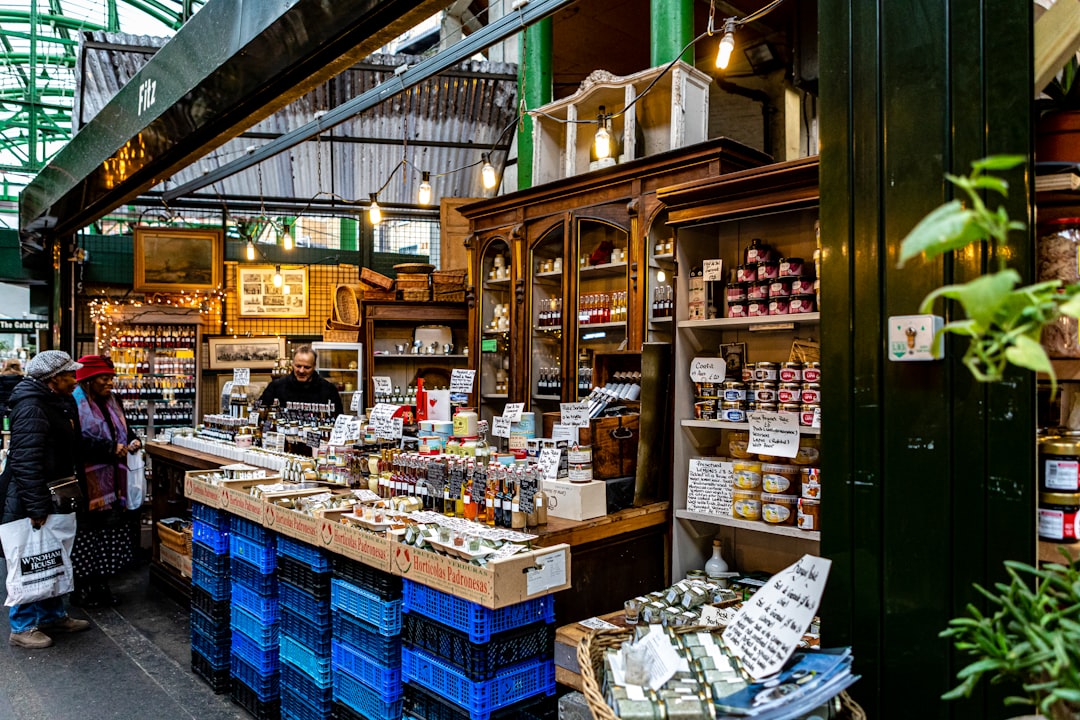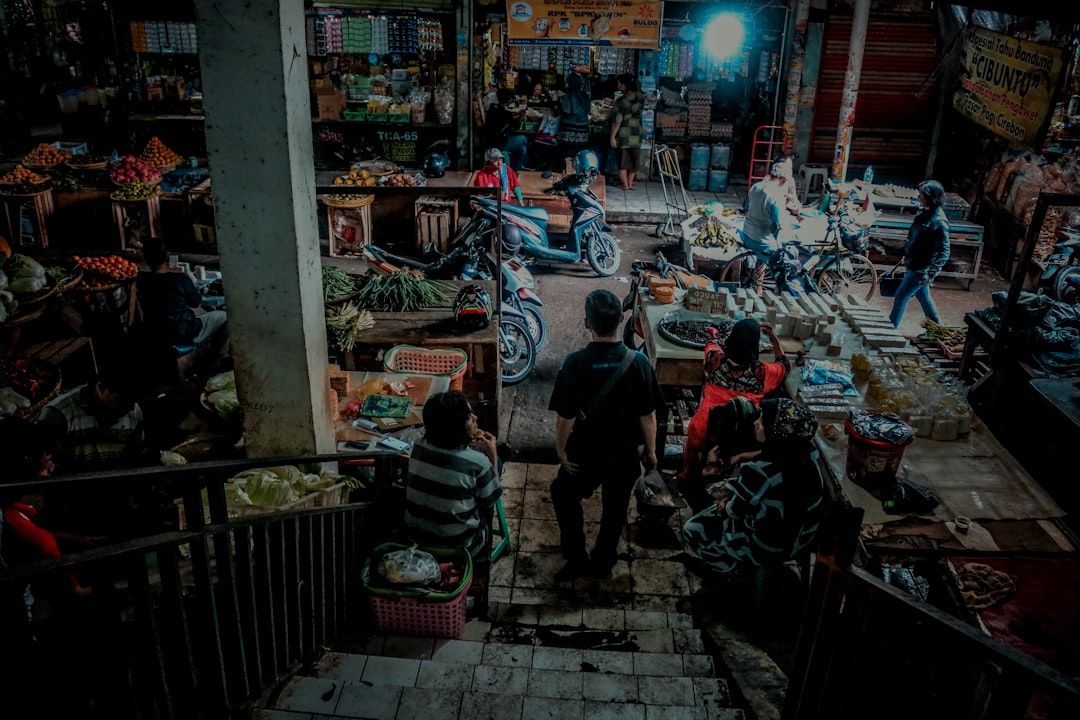

Engage prospects with a scan and streamline customer engagement with FREE QR code marketing tools by Sona – no strings attached!
Create a Free QR CodeFree consultation

No commitment

Engage prospects with a scan and streamline customer engagement with FREE QR code marketing tools by Sona – no strings attached!
Create a Free QR CodeFree consultation

No commitment
Organic food stores face a rapidly evolving consumer landscape where transparency, sustainability, and trust are essential to winning customer loyalty. Shoppers want to know exactly where their produce came from, how it was grown, and whether it truly supports local and sustainable choices. At the same time, retailers need efficient ways to turn in-person curiosity into measurable engagement without adding friction to the shopping experience.
QR code technology meets this need by connecting physical retail to dynamic digital experiences. A simple scan allows shoppers to trace origins, verify certifications, learn about farming practices, and join loyalty programs on the spot. For the retailer, every scan creates a data point that reveals intent, helps prioritize follow-up, and informs better product, merchandising, and marketing decisions.
In short, QR codes transform anonymous foot traffic into a connected audience that is both educated and engaged. That combination builds trust while enabling data-driven growth across channels.

Organic food retailers often experience high in-store curiosity with low data capture. Shoppers compare products, ask staff about growing practices, or attend tasting events, yet many never sign up for emails or loyalty. QR codes resolve that gap by turning peak-interest moments into instant, low-friction actions. Instead of asking customers to fill out paper forms or remember a URL, a scan connects them to rich content and simple opt-ins in seconds.
To succeed, approach QR codes as more than links. Treat them as intentional conversion points that replace outdated analog processes. Printed brochures become interactive traceability hubs; manual sign-up sheets become one-tap loyalty enrollment; recipe cards become dynamic content that updates with seasonal availability. With the right goals, placements, and tracking, the in-store experience becomes a measurable driver of repeat visits and higher average order value.
These principles streamline the customer journey while giving teams the visibility they need to focus on high-value moments. Platforms like Sona QR support each step, from code generation and design to analytics and CRM integration.

Most organic food stores invest heavily in storytelling, local sourcing, and community education, yet they often lack a reliable bridge from those in-person experiences to measurable outcomes. QR codes solve the disconnect by bringing transparency and action together in a single scan. Shoppers can explore the story behind a product, compare certifications, or enroll in rewards without downloading an app or waiting for help from staff.
The impact is especially strong on materials common to organic retail. Shelf talkers, produce bands, recipe cards, farm features, event flyers, and CSA brochures all benefit from a scannable prompt that converts curiosity into a traceable next step. The result is a customer experience that feels more personal and informative while giving the business first-party data to guide follow-ups.
Together, these advantages make QR codes a practical foundation for modern organic retail: they support the store’s mission of transparency while giving teams the data and agility needed to grow.
Organic food stores need QR code formats that match varied customer interactions. From casual browsing to in-depth education or impulse loyalty enrollment, different moments call for different destinations. The most effective programs map formats to the shopper’s intent and context, then optimize the journey with dynamic routing and tracking.
In this vertical, formats that emphasize transparency, sign-ups, and utility tend to outperform others. Traceability pages and certification explainers satisfy curiosity; forms power loyalty and event RSVP; SMS or email pre-fills allow quick questions or recipe delivery; app download links simplify onboarding for stores with mobile apps.
Dynamic QR codes are recommended for most retail scenarios. They allow you to change destinations as campaigns evolve, add UTM parameters, A/B test content, and gather analytics without reprinting.

Growth in organic retail often comes from deepening loyalty and increasing the value of every visit. QR codes help by converting routine interactions into trackable engagement, guiding shoppers from curiosity to action. Think of every physical surface and event as a chance to educate, capture preferences, and extend the relationship beyond checkout.
Placement strategy is critical. Prioritize areas where intent and dwell time are high, where customers may have questions, and where an immediate digital action would be useful. Test different CTAs to see which prompts resonate in each context, then allocate resources accordingly.
By deliberately mapping codes to retail hotspots, you convert interest where it happens instead of hoping customers take action later. Over time, this creates a measurable pipeline of engaged shoppers. See more vertical tactics in Sona QR’s retail guide.

QR codes excel at resolving common pain points in organic retail: proving authenticity, educating at the point of decision, and capturing interest when intent is highest. Use cases should reflect the store’s brand promise while offering immediate value to the shopper.
Start with a few high-impact scenarios that match your traffic patterns, product mix, and community focus. Then expand into adjacent use cases as you learn which prompts and placements perform best.
Beyond these, consider recipe builders that adapt to seasonal inventory, sustainability spotlights that show impact metrics, and supplier feature stories that humanize your ecosystem. Each scan becomes a new touchpoint in an ongoing education and loyalty journey.
Every scan contains signals you can use: what the shopper scanned, where they were, and when the interaction happened. By placing multiple QR codes across the store, packaging, and community channels, you automatically segment audiences based on their interests and buyer stage. This improves the relevance of your follow-ups and reduces wasted outreach.
Segmentation for organic retail can be very specific. For example, you might segment by category interest such as fresh produce, bulk goods, or prepared foods; by value drivers such as local-first, certified organic, or functional health; by context such as in-store shopping versus farmers market or cooking class. Aligning messaging to these signals increases conversion and satisfaction.
With Sona QR, each code acts as a smart entry point into your funnel, making segmentation and retargeting a byproduct of everyday engagement. For paid media, consider intent-driven retargeting.
QR codes unify the offline and online sides of your brand. They transform posters, shelf talkers, and packaging into digital journeys you can measure and improve. The more consistently you connect channels, the more clearly shoppers experience your value and the more easily your team attributes results.
Plan integrations around the materials and activations that are already central to organic retail. Then use a centralized platform to monitor performance, keep content current, and sync scan signals to your CRM and ad tools for cross-channel continuity.
QR codes serve as the offline onramp to your digital marketing engine. With a platform like Sona QR, you can manage all codes in one place, monitor performance, and sync data to CRM and ad platforms to maintain a connected, measurable customer journey.
A structured process ensures that QR campaigns do more than engage; they convert. Use this checklist to align goals, placements, creative, and analytics so each scan moves shoppers toward loyalty and purchase.
Plan for at least one awareness, one consideration, and one conversion use case to create a simple but complete funnel. Start small, test diligently, and scale what works.
Clarify the specific business outcome you want to achieve. For organic food stores, strong entry points include traceability on premium produce, loyalty enrollment at checkout, and RSVP for educational events or tastings. Each use case should map to a point of natural curiosity or intent.
Think about seasonal relevance and inventory cycles. For example, launch a “Scan for farm-to-table details” initiative during peak local harvests, or “Scan for quick dinner recipes” during back-to-school weeks when shoppers prioritize convenience.
Choose static codes for permanent, non-trackable destinations like evergreen PDFs. Use dynamic codes for trackable, editable links that you can optimize over time. Dynamic codes are typically best for retail, since they enable content updates, UTMs, and A/B testing without reprinting.
Confirm that your platform supports device-aware routing, custom domains for trust, and analytics by time, location, and campaign source. These features matter when you want to scale.
Design for visibility, clarity, and action. Use a simple frame, strong contrast, and enough white space to ensure reliable scanning on glossy surfaces and in varied lighting. Always include a short, benefit-driven CTA placed directly next to the code.
Test with multiple devices and at the exact distance and angles customers will use. Validate that the destination loads quickly on mobile and that the content format matches the context, such as a short form for line-waiting or a long read for browsing.
Place codes where intent is high and the promise is relevant. Map each code to a shopper mindset and dwell time. For example, use quick actions with minimal fields at checkout, deeper educational content near produce displays, and event RSVPs on community boards.
Roll out in phases to isolate what works. Start with two or three strategic placements such as premium produce labels, a checkout sign, and an event flyer. Expand to packaging or direct mail after confirming performance.
Tracking turns engagement into learning. Use unique codes per placement and add UTM parameters to every destination. Monitor scan volume, conversion rates, time on page, and actions taken. Compare results across placements, creatives, and offers.
Iterate every two to four weeks. Adjust CTAs, reposition underperforming codes, and scale high-performing placements. Feed insights into merchandising and event planning to reinforce the loop between content and customer demand.
A brief post-mortem after each campaign wave helps build institutional knowledge. Share insights with staff so they can reinforce the most effective CTAs on the floor.

Closing the offline-to-online loop is essential for proving impact. It is not enough to count scans; you need to know which scans led to sign-ups, purchases, and repeat visits. Robust analytics unlock smarter spending decisions, better content priorities, and more relevant customer journeys.
Focus on two levels of insight. First, campaign-level performance such as which placements, creatives, and offers drive the most qualified actions. Second, customer-level insights such as which segments respond to transparency content versus savings offers, and how those preferences change by season or store location.
Sona QR captures detailed scan data such as time, device, and location, while Sona.com connects those signals to buyer journeys and revenue through identity resolution and multi-touch attribution. Together, they transform QR codes from novelty into a performance channel.
Scaling success requires consistent execution, clear CTAs, and automation that turns scans into ongoing conversations. Start with a few best practices that match your most common media types and customer journeys, then add creative deployments to keep engagement fresh.
Consider a quarterly rhythm for experimentation. Rotate CTAs by season, spotlight different suppliers, and use scan data to inform merchandising. Involve staff in promoting scans and explaining benefits, since a friendly prompt at the right moment can dramatically increase participation.
Creative examples include QR codes on reusable shopping bags that unlock a rotating set of seasonal recipes, or QR-enabled shelf talkers that let shoppers vote for the next local farm to feature. These activations deepen community ties while collecting rich intent data.
QR codes are a strategic lever for organic food stores committed to transparency, education, and community connection. They turn shelf tags, packaging, event signage, and printed collateral into gateways for traceability, sustainability insights, and loyalty experiences. The payoff is twofold: customers get the information and value they want in seconds, and retailers get the analytics they need to invest wisely.
The most effective programs treat QR codes as part of a connected funnel rather than stand-alone tactics. Align your placements with buyer stages, test different CTAs, and integrate scan data with your CRM so that every interaction fuels smarter follow-ups and better experiences. Over time, this approach reduces wasted spend, increases repeat visits, and strengthens brand trust.
With thoughtful execution and the right tools, QR codes can convert everyday curiosity into measurable growth. Sona QR provides everything you need to generate, track, and optimize codes, while Sona.com connects those engagements to buyer journeys and revenue. Start creating QR codes for free.
QR codes have revolutionized organic food stores by transforming customer engagement from static displays into interactive, measurable experiences. Whether it’s attracting new customers, enriching in-store journeys, or promoting sustainable product education, QR codes turn every label and shelf talker into a gateway for deeper connections and meaningful insights. Imagine instantly knowing which products spark the most interest and tailoring your marketing on the fly to boost loyalty and sales.
With Sona QR, you can effortlessly create dynamic, trackable QR codes that update instantly without the hassle of reprinting. Every scan links directly to real-time data, helping you optimize campaigns, highlight seasonal offerings, and connect customers to exclusive content—all while driving revenue growth. No missed opportunities, just smarter engagement that nurtures your organic food community.
Start for free with Sona QR today and turn every scan in your organic food store into a powerful step toward lasting customer relationships and increased sales.
You can verify authenticity by scanning QR codes on produce labels or shelf tags that provide details about farm practices, certifications, and supply chain information.
Buying from local organic food stores supports transparency, sustainability, community education, and local farmers while providing access to fresh, certified produce with traceable origins.
QR codes connect shoppers to dynamic digital content where they can trace origins, verify certifications, learn about farming practices, and access sustainability information instantly.
Organic farming practices promote sustainability by reducing waste, supporting regenerative agriculture, and providing transparency about eco-friendly methods through QR-enabled educational content.
You support local farmers by choosing products with QR codes that share farm profiles and stories, attending community events, and enrolling in loyalty programs that prioritize local and sustainable sourcing.
QR codes provide transparency and convenience by linking physical products to digital information, enabling instant access to product stories, certifications, and loyalty programs without extra friction.
Common QR code formats include web links to farm profiles, mobile-optimized forms for loyalty sign-ups, SMS or email pre-fills for recipe requests, Wi-Fi access codes, and app download links.
QR codes are most effective on produce labels, point-of-sale materials, in-store signage, community boards, event flyers, and packaging where customer attention and intent are high.
Stores use QR codes to replace static materials with interactive content, enable easy loyalty enrollment, provide traceability, share recipes, and collect feedback, turning curiosity into measurable actions.
Tracking scans helps retailers understand which placements and messages drive engagement, supports segmentation for targeted follow-ups, and links offline interactions to revenue and repeat visits.
Best practices include using dynamic codes for flexibility, adding clear CTAs, testing scan performance in real settings, placing codes where shopper intent is high, and tracking analytics for ongoing optimization.
QR codes reduce waste by replacing printed materials with dynamic digital content, provide up-to-date information on sustainable farming practices, and help communicate environmental impact metrics to shoppers.
Stores direct customers to quick, mobile-friendly sign-up forms via QR codes at checkout or demo stations, offering incentives and personalized content to capture loyalty enrollment at moments of high enthusiasm.
Yes, QR codes on flyers and event materials enable RSVPs, share schedules or educational content, and help stores build warm leads and maintain ongoing relationships with event attendees.
Analytics provide insights into scan volume, conversion rates, and customer behavior allowing retailers to test CTAs, reposition codes, improve messaging, and attribute revenue to QR-driven interactions.
Use Sona QR's trackable codes to improve customer acquisition and engagement today.
Create Your FREE Trackable QR Code in SecondsJoin results-focused teams combining Sona Platform automation with advanced Google Ads strategies to scale lead generation

Connect your existing CRM

Free Account Enrichment

No setup fees
No commitment required

Free consultation

Get a custom Google Ads roadmap for your business






Launch campaigns that generate qualified leads in 30 days or less.
